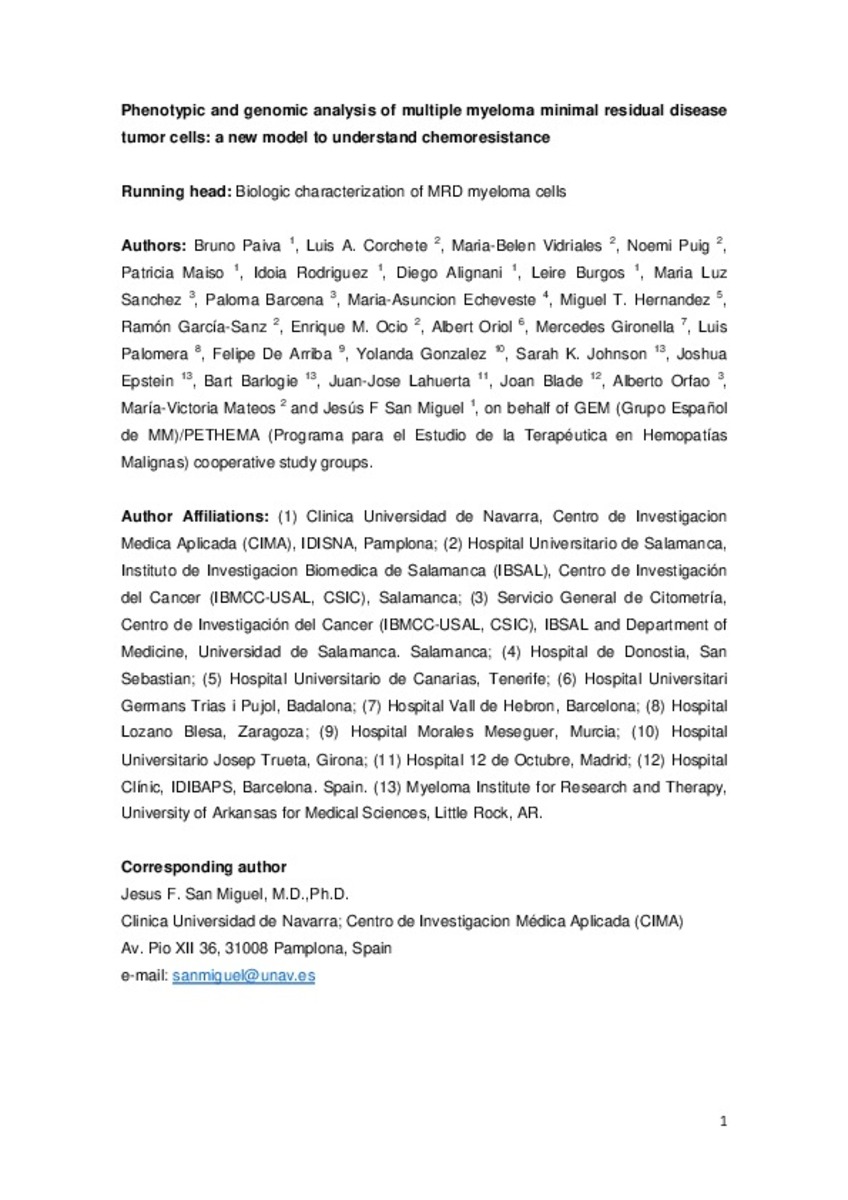Phenotypic and genomic analysis of multiple myeloma minimal residual disease tumor cells: a new model to understand chemoresistance
Palabras clave :
Materias Investigacion::Ciencias de la Salud::Hematología
Fecha de publicación :
2016
Editorial :
American Society of Hematology
Cita:
Paiva, B. (Bruno); Corchete, L.A. (Luis A.); Vidriales, M.B. (María Belén); et al. "Phenotypic and genomic analysis of multiple myeloma minimal residual disease tumor cells: a new model to understand chemoresistance". Blood. 127, 2016, 1896 - 1906
Aparece en las colecciones:
Estadísticas e impacto
0 citas en

0 citas en

Los ítems de Dadun están protegidos por copyright, con todos los derechos reservados, a menos que se indique lo contrario.











